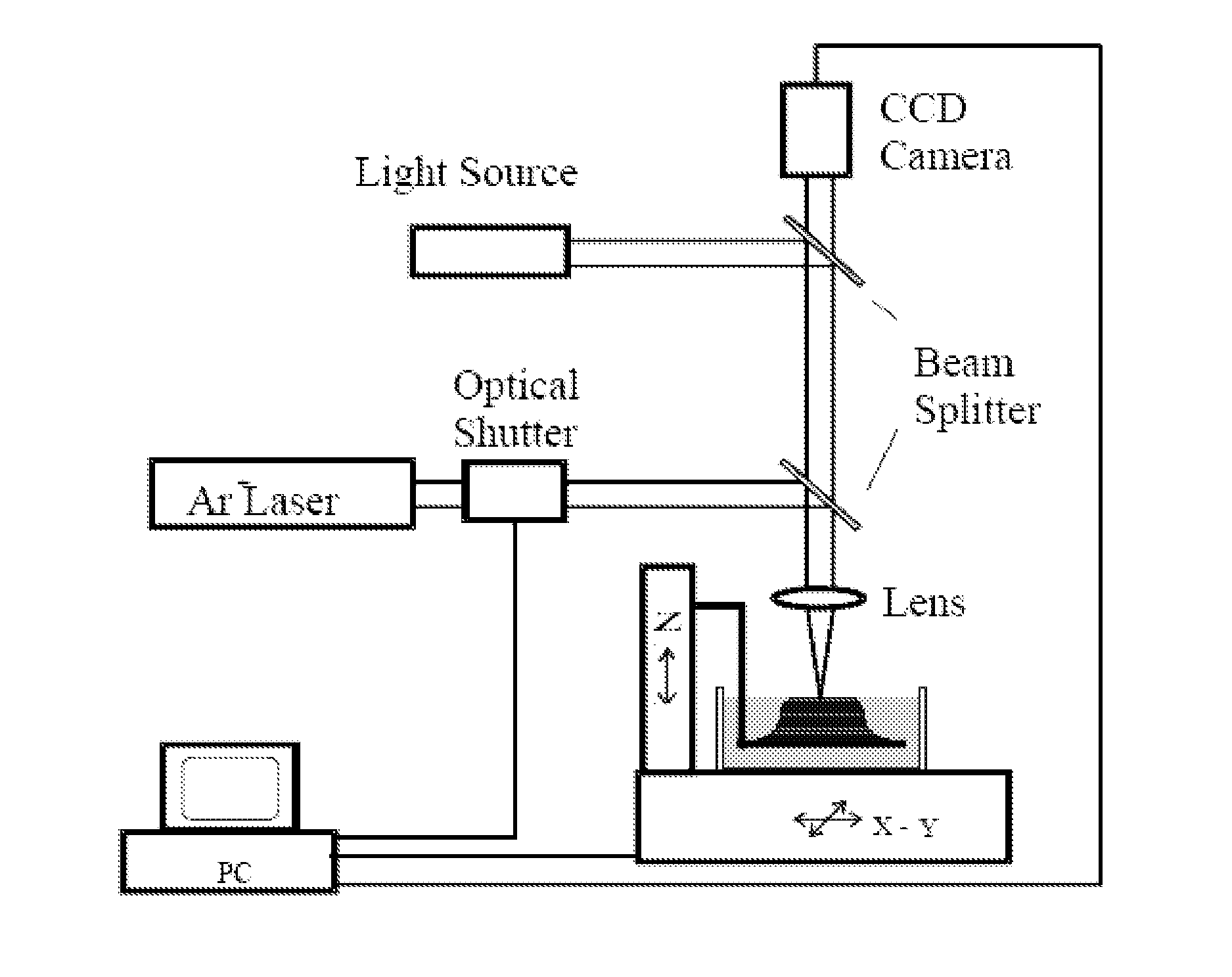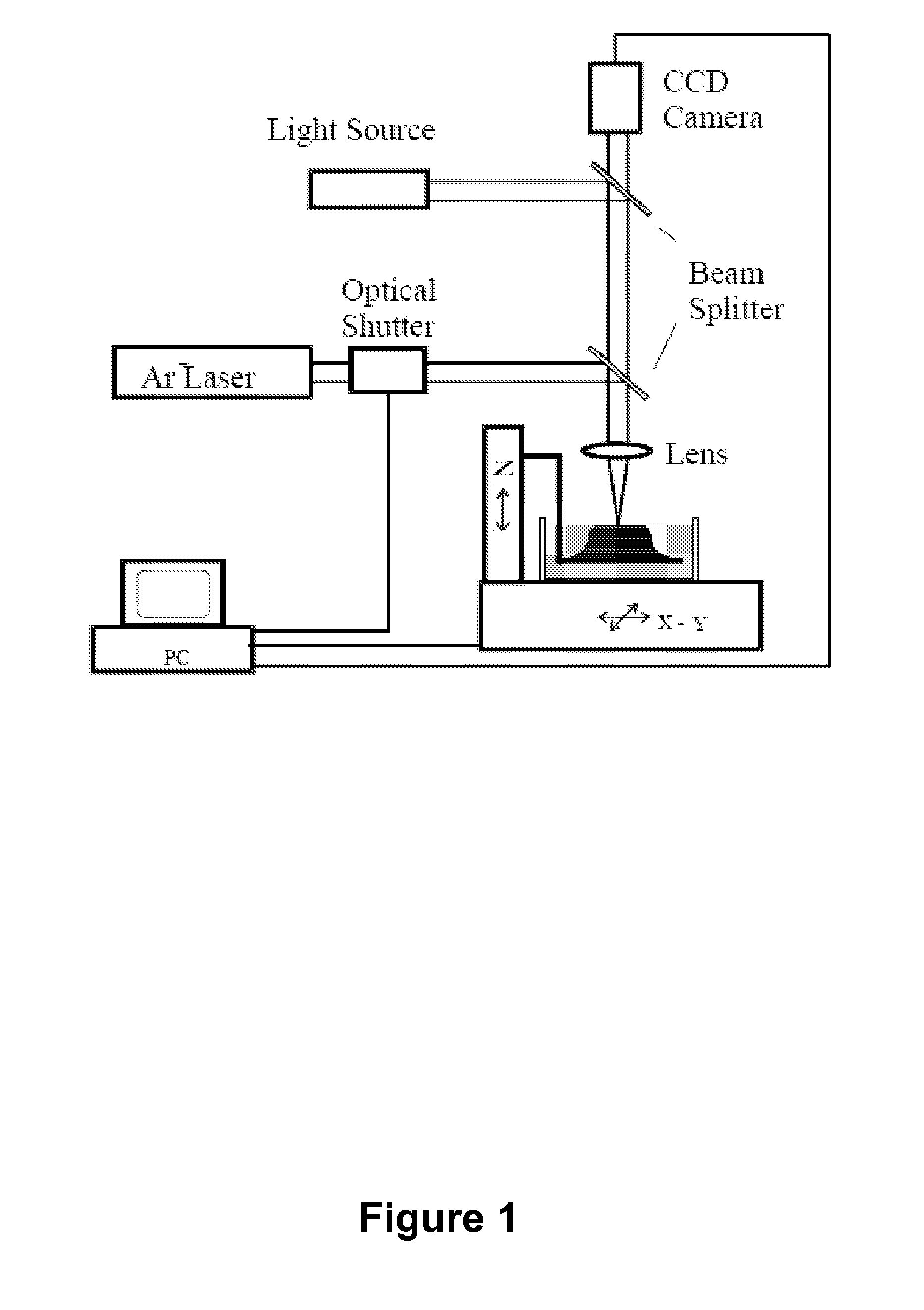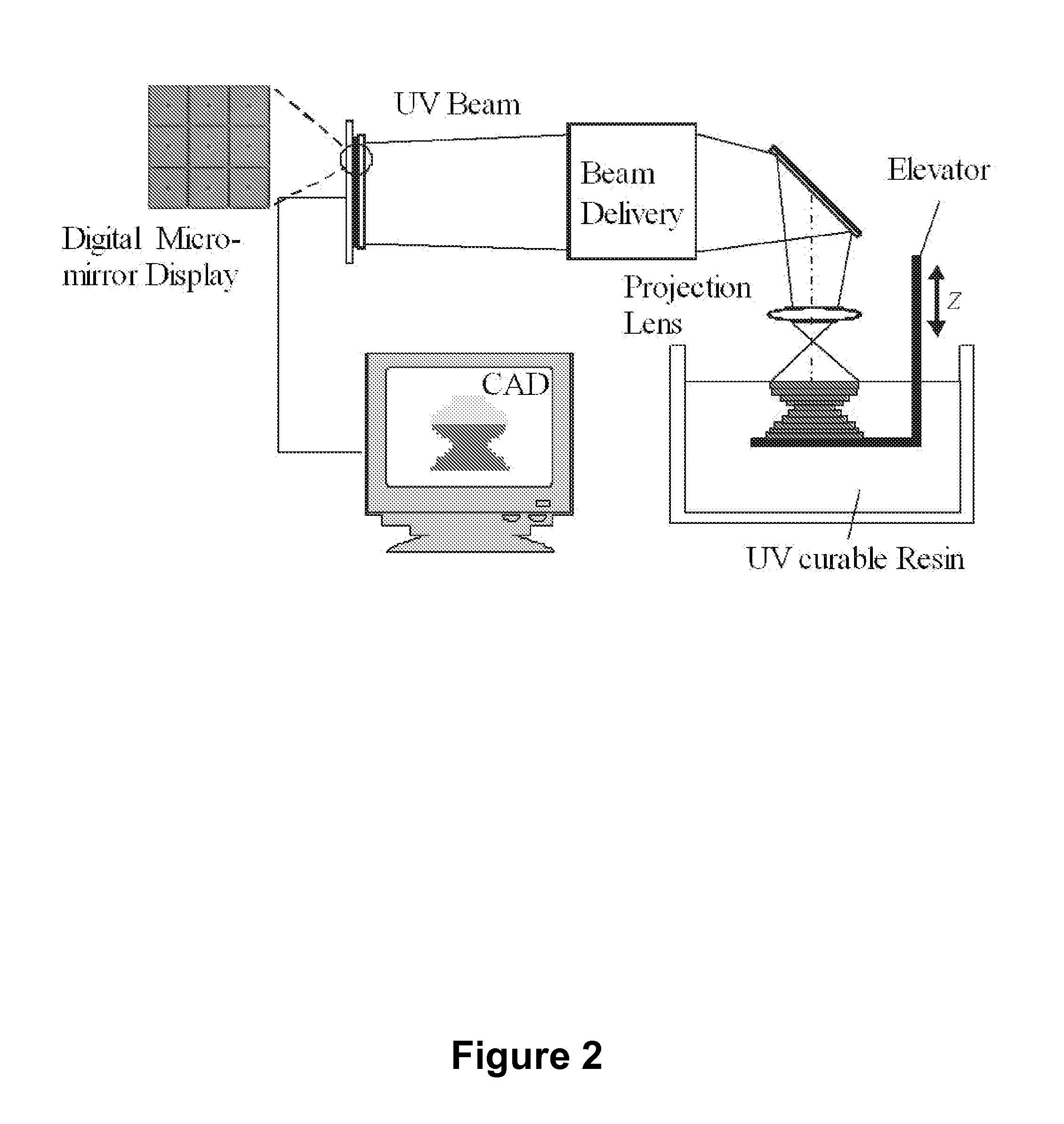Three-Dimensional Microfabricated Bioreactors with Embedded Capillary Network
a microfabricated bioreactor and capillary network technology, applied in the field of three-dimensional microfabricated bioreactors with embedded capillary network, to achieve the effect of facilitating cell growth and expansion
- Summary
- Abstract
- Description
- Claims
- Application Information
AI Technical Summary
Benefits of technology
Problems solved by technology
Method used
Image
Examples
example 1
Introduction to Microstereolithography
[0135]Stereolithography (SL) is a powerful fabrication technology which utilizes light-induced polymerization of liquid monomers to form complex three-dimensional shapes for a variety of purposes. Stereolithography is capable of fabricating complex three-dimensional solid structures using only light as a writing tool and liquid polymer as a base material. Stereolithography is a member of a larger class of photolithography technologies used for making silicon circuits and MEMS devices in the sense that all use light as a writing instrument.
[0136]The advent of microelectromechanical systems (MEMS) was brought about by the application of IC fabrication technology to the unique manufacturing challenges that exist at the microscale. The broad success of MEMS-based approaches has resulted in a multitude of new microsystems spanning a diverse range of applications from automobiles to biomedicine to counterterrorism. Despite the success of mass fabricat...
example 2
Enhanced Microstereolithography Via Electrowetting-Induced Surface Flattening of a Two Fluid Interface
[0187]One of the major hindrances to the progress and eventual commercialization of microstereolithography technology is the long dwell times required for viscous polymers between fabrication of successive layers; the viscous forces of the heavier polymers resist the flattening efforts of gravity.
[0188]One potential solution for this problem involves constraining the surface of the liquid using a transparent plate. The plate, if positioned slightly below the liquid surface, would ensure a flat liquid surface and a uniform layer thickness without the long dwell times required by the free surface approach. However, as described by Ikuta, there are serious obstacles to this approach due to secondary polymerization of the resin on the underside of the plate [35]. In short order secondary polymerization on the plate's surface renders it too opaque to allow the light to pass through it. A...
example 3
Modeling Biological Tissue
[0244]If the structure and function of biological systems can be better understood, their engineering knowledge can be more effectively utilized to serve humanity's needs. The most effective guides to utilizing the engineering designs of living systems are the living systems themselves.
[0245]One of the challenges involved in accurately modeling biological systems is reproducing the fine shades of density, structure, and function present in biological tissues. Tuning the properties of different regions of the tissue samples is critical to proper modeling, yet very difficult to accomplish using traditional manufacturing techniques. Here the modeling of biological systems in PEDGA monomers and the ability of microstereolithography to “tune” the diffusion properties of such models are demonstrated. With these tools in hand more accurate models of biological structures can be realized, and their unique properties may be utilized to serve a broad range of applica...
PUM
 Login to View More
Login to View More Abstract
Description
Claims
Application Information
 Login to View More
Login to View More - R&D
- Intellectual Property
- Life Sciences
- Materials
- Tech Scout
- Unparalleled Data Quality
- Higher Quality Content
- 60% Fewer Hallucinations
Browse by: Latest US Patents, China's latest patents, Technical Efficacy Thesaurus, Application Domain, Technology Topic, Popular Technical Reports.
© 2025 PatSnap. All rights reserved.Legal|Privacy policy|Modern Slavery Act Transparency Statement|Sitemap|About US| Contact US: help@patsnap.com



